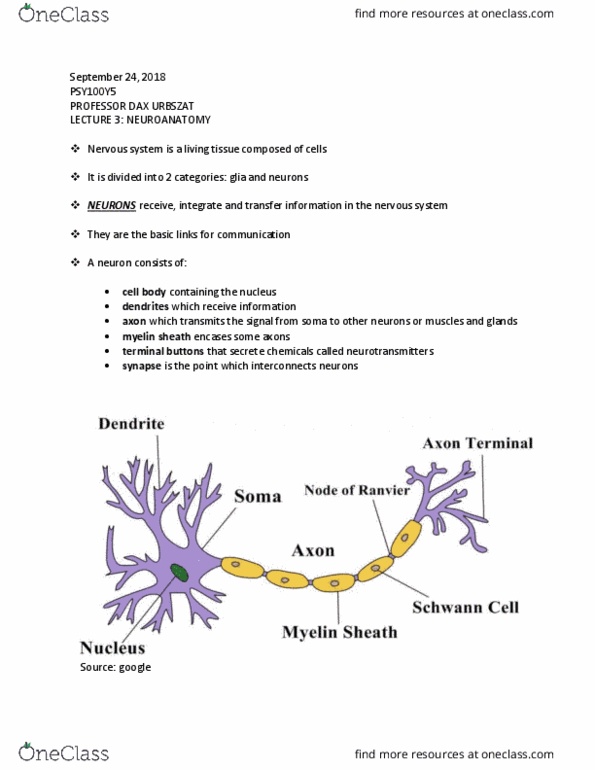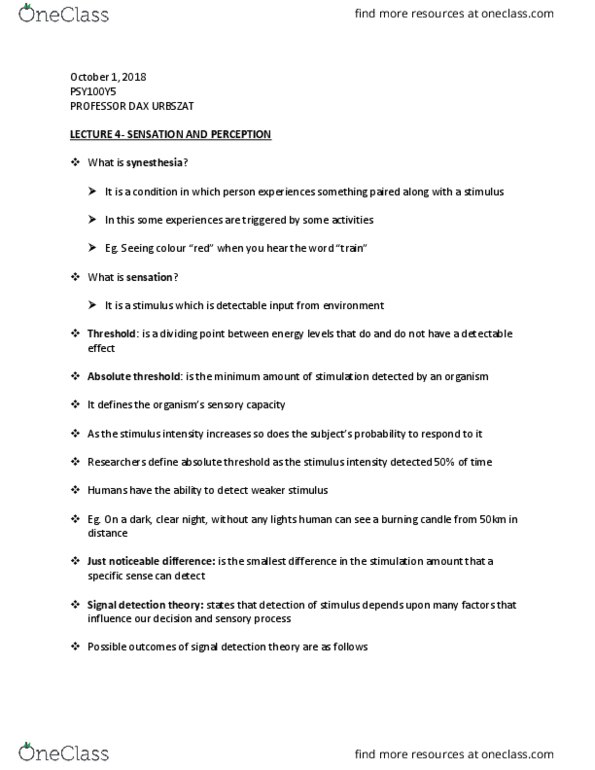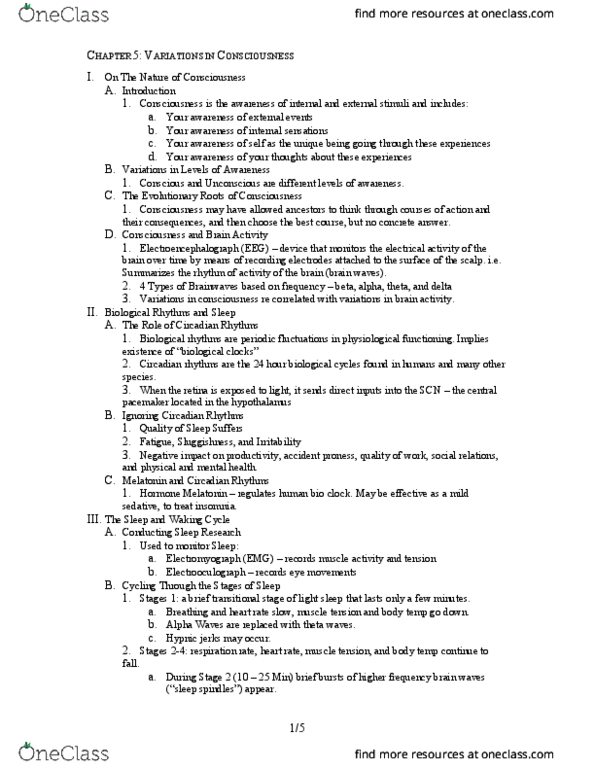PSY100Y5 Lecture Notes - Lecture 4: Detection Theory, Absolute Threshold, Synesthesia
PSY100Y5 verified notes
4/12View all
Document Summary
It is a condition in which person experiences something paired along with a stimulus. In this some experiences are triggered by some activities. Eei(cid:374)g (cid:272)olour (cid:862)red(cid:863) whe(cid:374) you hear the word (cid:862)trai(cid:374)(cid:863) It is a stimulus which is detectable input from environment. Threshold: is a dividing point between energy levels that do and do not have a detectable effect. Absolute threshold: is the minimum amount of stimulation detected by an organism. As the sti(cid:373)ulus i(cid:374)te(cid:374)sity i(cid:374)(cid:272)reases so does the su(cid:271)je(cid:272)t"s pro(cid:271)a(cid:271)ility to respo(cid:374)d to it. Researchers define absolute threshold as the stimulus intensity detected 50% of time. Humans have the ability to detect weaker stimulus. On a dark, clear night, without any lights human can see a burning candle from 50km in distance. Just noticeable difference: is the smallest difference in the stimulation amount that a specific sense can detect. Signal detection theory: states that detection of stimulus depends upon many factors that influence our decision and sensory process.







